
8 Ancient Voyages That Changed the World
Throughout human history, the call of the unknown has driven explorers to embark on daring voyages into uncharted waters. These intrepid explorers have braved treacherous seas, and unknown dangers, driven by the thrill of discovery and the promise of new knowledge and riches. From the earliest days of seafaring civilizations the human desire to explore and push the boundaries of what is possible has led to some of the greatest achievements in history. Here are 8 of the greatest voyages of all time and how they shaped history.
1.Pytheas - Discovered Thule (Kind Of)
We start our list with one of the great ancient Greek explorers, Pytheas. Born in around 350 BC, Pytheas spent much of the 4th century BC on voyages exploring the coasts of Europe. His most famous voyage was when he set sail from the Greek colony of Massalia (modern-day Marseille in France) and sailed to the north, reaching regions the Greeks had never laid eyes upon before.
His most famous achievement is perhaps discovering the land of Thule in the Northern Atlantic. This is a bit of a strange one because, for all intents and purposes, Thule doesn’t exist and never has. Pytheas believed he had discovered a hitherto unknown frozen island far North of Britain, the only problem being, there was no island there.
Today many historians believe Pytheas was either lying or got lost. It is likely that “Thule” was actually modern-day Norway or Iceland. Pytheas described Thule as a land of perpetual ice and snow where the sun barely rose. It’s more likely Pytheas would have described anywhere near England as perpetually damp and grey!
Pytheas didn’t just discover imaginary islands. He extensively voyaged around the coasts of Britain, Iceland, and northern Germany, documenting the customs and lifestyles of the people he met along his way.
His greatest accomplishments were perhaps on the scientific side of his voyages. He was fascinated by tidal systems which he studied and described them in great detail. He is also credited as being one of the first navigators to identify the phenomenon of the midnight sun, where the sun remains visible for 24 hours a day in the far north during the summer months.
2.Leif Erikson - Beat Columbus to it
Christopher Columbus was the first European to set foot on North American soil. Right? Wrong. Over the years it has become increasingly likely that a Norse explorer by the name of Leif Erikson beat Columbus to it, and likely many others did too.
Leif Erikson was a Norse explorer active during the 10th century. According to the Norse sagas, Leif’s greatest achievement was when he sailed from Greenland to a region called Vinland, believed to be somewhere in modern-day Newfoundland, Canada today.
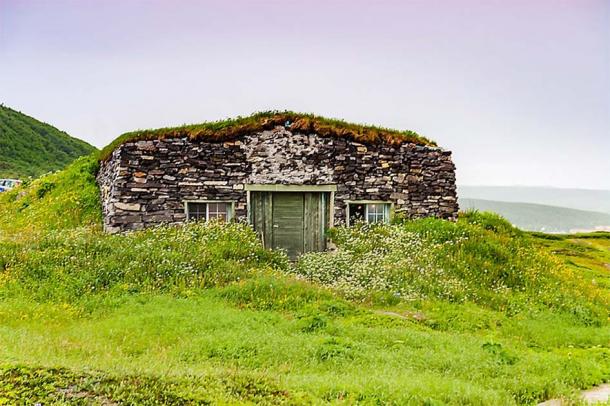
L'Anse aux Meadows is the only site widely accepted as evidence of pre-Columbian trans-oceanic contact. It is notable for its possible connection with the attempted colony of Vinland established by Leif Erikson around the same period or, more broadly, with Norse exploration of the Americas. (Michel Rathwell/CC BY 2.0)
Our knowledge of Norse history is famously spotty, but it’s believed Leif’s voyage set sail around the year 1000 AD. It is likely he got the idea for his journey after another famous Norse explorer, Bjama Herjolfson, had been blown off course while sailing to Iceland and stumbled across the unknown region.
Leif set sail with around 30 of his best men and upon reaching Vinland, established a Viking settlement in an area called L’Anse aux Meadows. They weren’t there for very long (carbon dating estimates from 990-1050 AD) but it was a major achievement in Norse exploration and colonization. Evidence of Norse buildings including a longhouse and a smithy has been found and it is believed they traded and interacted with the locals, whom they dubbed “Skraelings.”
Leif Erikson is a celebrated figure in Norse culture and mythology but only in recent years has he started to get the recognition he deserves as the first European to land in North America. Today L’Anse aux meadows is a UNESCO World Heritage Site and a popular tourist attraction.
3.Columbus - Set Out for Asia, Found America
It might seem a little unkind to follow up Leif with Columbus, but Columbus’s voyage was still an important one. Born in Genoa, Italy, in 1451, Columbus is perhaps the most famous explorer of all time. In particular, he’s famed for his attempt at finding a new route to the lucrative spice trade in Asia.
Going against what was accepted knowledge at the time, Columbus believed that by sailing west across the Atlantic, he could reach Asia more quickly than by sailing around the southern tip of Africa like everyone else.
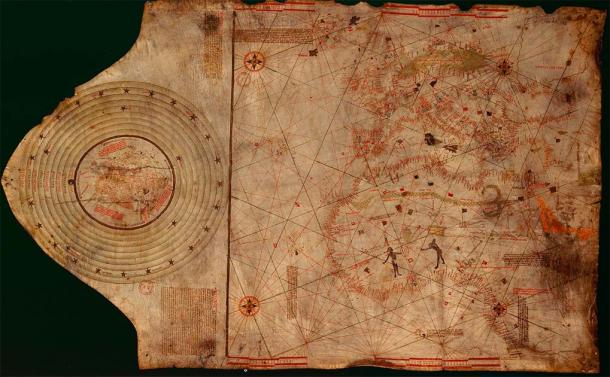
"Columbus map", drawn c. 1490 in the Lisbon mapmaking workshop of Bartholomew and Christopher Columbus. (Public Domain)
Getting sponsors for his voyage was no easy task. Most people believed the earth was flat and thought Columbus’s ship would sail right off the edge of the earth. Those who were coming around to the idea of earth being a globe just thought he’d get lost. Still, in 1492 Columbus set sail from the port of Palos in Spain and headed west. He took three ships with him, the Nina, the Pinta, and the Santa Maria.
After a few weeks at sea, Columbus and his crew spotted land, which they believed to be Asia. Instead, they reached an island in the Bahamas, which Columbus named San Salvador. Over the next few months, Columbus and his men explored the coasts of Cuba and Hispaniola, establishing the settlement La Navidad.
Over the years Columbus made a total of four voyages to the New World. Once hailed as a hero, today his legacy is a complicated one. On the one hand, he’s credited as being responsible for opening up the Americas to European exploration and colonization.
But on the other hand, what one person calls colonization, another calls exploitation. His treatment of the indigenous peoples he found has been widely criticized. Columbus and his men brought disease and violence to the New World and the European colonizers happily enslaved and exploited many of the locals.
4.Zheng He - Ancient China’s Greatest Explorer
It isn’t just Europe that has given us some of history’s greatest voyages. The Chinese explorer Zheng He was born in China in 1371. A high-profile admiral in the imperial navy of the Ming dynasty, Zheng He was tasked with an important mission, to lead a series of voyages to establish diplomatic and trade relations with other countries.
- Ancient Mariners: Transoceanic Voyages Before the Europeans
- Did China discover America 70 years before Columbus?
His first voyage took place in 1405 and was of a grand scale. Zheng He commanded over 300 ships, including colossal treasure ships measuring up to 400 feet long (121.92m). The voyages had one goal, to promote Chinese power and prestige and it was Zheng He’s mission to deliver gifts and treasures to the leaders of the countries he visited.
Under the Yongle Emperor (third Emperor of the Ming dynasty) and Xuande Emperor (fifth Ming Emperor) Zheng He carried out 7 voyages. He visited a wide range of countries and regions, including Southeast Asia, India, and East Africa. Along the way, he established important Chinese trading posts and diplomatic missions in these areas. On his return trips, he brought home exotic animals such as giraffes and zebras to entertain the Chinese court.
All of this wasn’t cheap. While his voyages were remarkable achievements in both maritime exploration and diplomacy, after his death in 1433 the Chinese government turned inward and brought an end to China’s age of exploration.
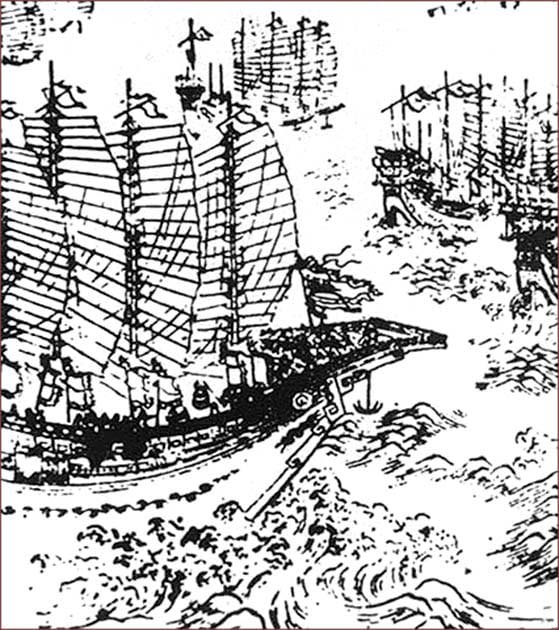
Woodblock print representing Zheng He’s ships. (Public Domain )
5.Magellan - Around the World in 1095 Days
Columbus wasn’t the only European whose voyages were focused on the spice trade. Ferdinand Magellan, born in Portugal in 1480, was a soldier and sailor who was commissioned by the Spanish government to lead an expedition to find a western route to the spice islands of Indonesia.
He set sail from Spain in 1519 with a fleet of five ships and a crew of over 200 men. He crossed the Atlantic and traveled south along the coast of South America. In doing so he discovered a passage that led through the southern tip of the continent, the Strait of Magellan. His voyage then continued as he crossed the Pacific Ocean, encountering several new islands along the way, including Guam and the Philippines.
Magellan’s voyage was a long one. So long in fact, that by the time his crew returned to Spain in 1522, they had circumnavigated the globe. The first people in history to do so. Despite being remembered as the first man to circumnavigate the globe, Magellan didn’t finish his voyage.
His trip had faced numerous challenges along the way from storms to mutinies and skirmishes with ingenious people. One of these skirmishes proved fatal and Magellan fell in the Philippines, killed by a bamboo spear, on 27th April 1521 after trying to convert the locals to Christianity.
6.Hanno the Navigator - Ancient Voyage in Africa
Hanno the Navigator, or Hanno the Carthaginian as he was also known, was an explorer from the ancient city-state of Carthage located in modern-day Tunisia. In the 5th century AD, he set out on a voyage along the west coast of Africa looking to establish new trade routes that would expand his people’s influence.
Hanno voyaged far and wide. His ships took him along the Atlantic coast of Africa through present-day countries like Morocco, Western Sahara, Senegal, and Gambia. Along the way Hanno stopped to take in the sites, encountering many new lands and peoples, including the people of the Verde Islands. He even discovered a tribe of ape-like, highly aggressive people. He killed three of them, skinned them, and took their pelts back to Carthage. Their name? The Gorillai.
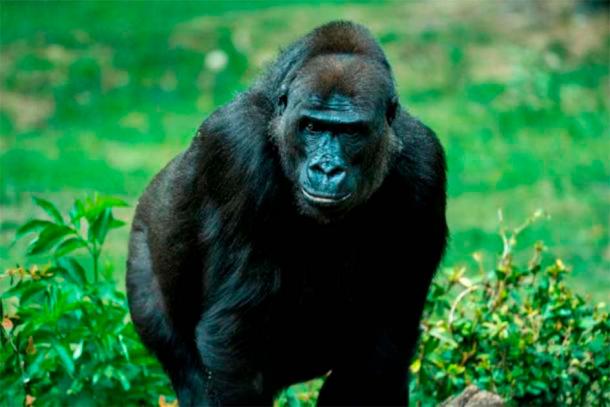
The term gorilla comes from Carthaginian explorer Hanno the Navigator, who was exploring the African coast. He described coming across a tribe of “gorillae”, monstrous and violent humans. It is likely he actually encountered chimps or baboons. (Mira Miejer / CC BY SA 4.0 )
Hanno recorded his voyages in a text called the Periplus of Hanno which details the lands and peoples he came across. While some historians today doubt its accuracy it is still seen as an important document in the history of exploration and geography. Hanno’s voyage helped establish Carthage’s influence along Africa’s west coast and paved the way for further exploration and trade in the region.
7.Sir Francis Drake - Survived Circumnavigating the Globe
Magellan may have been the first man to circumnavigate the globe but Sir Francis Drake, the second man to do so, did it in style. Sir Francis Drake was a 16th-century English explorer, privateer, and naval commander whose voyages have become the stuff of legend.
Drake’s first voyage was in 1567 when he sailed to the Caribbean as part of a slave trading expedition. Over the next ten years, he made several voyages to the Americas. During these trips, he was a state-sanctioned privateer. He raided Spanish ships and settlements accumulating great wealth and fame in the process.
![A map of Drake's voyage [showing Europe, western Africa, northern South America, and eastern North America]; the four other engravings consist of bird's-eye battle plan views of the cities of Santiago, Santo Domingo, Cartagena, and St. Augustine, Florida.(Public Domain)](https://www.ancient-origins.net/sites/default/files/styles/large/public/map_51.jpg?itok=u71Z0WjB)
A map of Drake's voyage [showing Europe, western Africa, northern South America, and eastern North America]; the four other engravings consist of bird's-eye battle plan views of the cities of Santiago, Santo Domingo, Cartagena, and St. Augustine, Florida.(Public Domain)
In 1577 he used this wealth to set out on a three-year voyage around the world, copying Magellan’s feat. Along the way, he explored the west coast of South America, claimed land for England in what is now California, and traded with the people of the Moluccas in modern-day Indonesia.
Perhaps his greatest achievement came in 1588 when he played a key role in the defeat of the Spanish Armada which had been sent to invade England. Drake's years of experience and skill as a naval commander helped to turn the tide of the battle and secure a massive victory for England.
- Norse Greenlanders Traveled to North America and Europe for Timber for Five Centuries
- The Adena People and Prehistoric Colonization of North America
8.Erik the Red - The Great Norse Adventurer
History often focuses on those explorers who made the most famous discoveries or whose accomplishments had the most visible impact on history. But often these men’s successes and achievements wouldn’t have been possible if it weren’t for the work of the lesser-known explorers who came before them.
Erik the Red was a Norse explorer and adventurer whose voyages paved the way for later Norse expeditions to North America during the 10th century AD. According to legend, Erik was exiled from Iceland after committing murder and so he set out to find new lands to live in.
He and his crew sailed westward across the north Atlantic and eventually arrived in a remote, uninhabited land that they named Greenland. Conditions were harsh and the environment was challenging, but Erik and his followers managed to set up several settlements, thriving there for several centuries.
These settlements enabled later explorers, like Leif, to head even further northwards, eventually discovering North America. Today Erik is remembered as a bold and daring explorer who played a crucial role in shaping the history of the North Atlantic region.
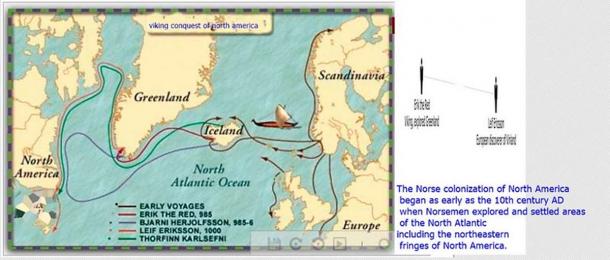
Erik the Red is remembered in medieval and Icelandic sagas as having founded the first continuous settlement in Greenland. (tonynetone/ CC BY 2.0)
Conclusion
The voyages of exploration throughout human history have shaped the world we live in today. From the ancient mariners like Pytheas and Hanno who connected different civilizations and sparked cultural exchange, to the early voyages of discovery that led to the discovery of new continents, each journey has contributed to our understanding of the world and our place within it.
Today we often take travelling great distances for granted, or worse, see it as a chore. We must remember these early voyages required incredible feats of courage, resourcefulness, and adaptability from the explorers who undertook them. They not only expanded our knowledge of the world, but also enriched our cultures and transformed our societies. The legacies of these voyages continue to inspire and captivate us, driving us to seek out new frontiers and push beyond our boundaries.
Top image: Ancient voyages set off to discover new realities. Source: XaMaps/Adobe Stock
References
Cartwright. M. 2021. Ferdinand Magellan. Available at: https://www.worldhistory.org/Ferdinand_Magellan/
Davidson. L. 2022. Who Was Norse Explorer Leif Erikson? Available at: https://www.historyhit.com/who-was-leif-erikson/
Editors. 2009. Christopher Columbus. Available at: https://www.history.com/topics/exploration/christopher-columbus#:~:text=The%20explorer%20Christopher%20Columbus%20made,he%20stumbled%20upon%20the%20Americas.
Wallace. B. 2023. Erik the Red. Available at: https://www.britannica.com/biography/Erik-the-Red















